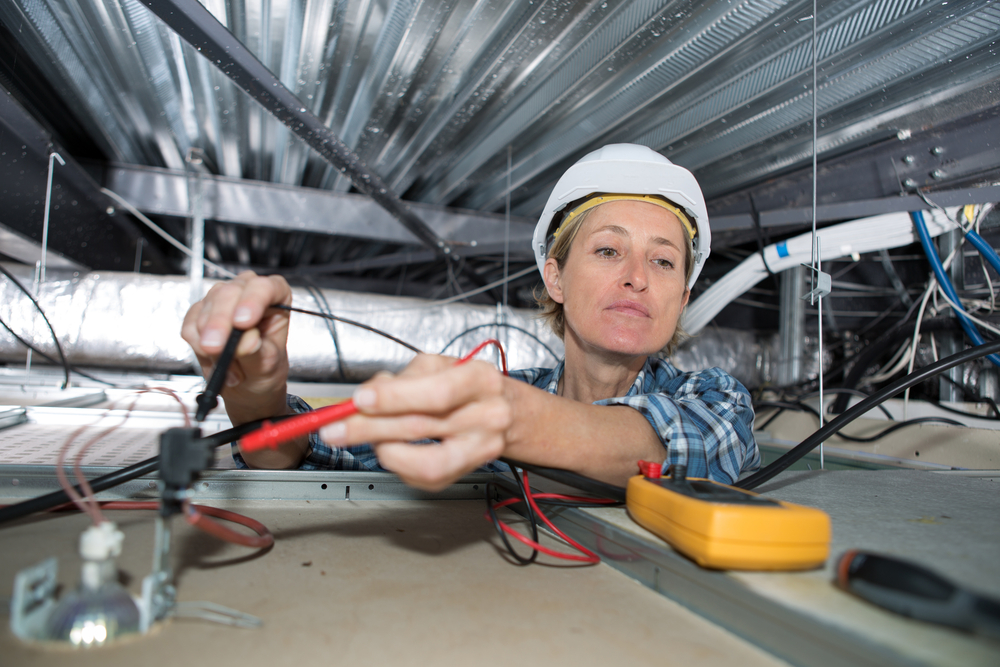The demand for trained electricians has reached critical levels as the United States strives to shift away from fossil fuels and toward sustainable energy alternatives. Unfortunately, the electrical industry is still mainly male, with women accounting for a mere two percent of all electricians. Women’s underrepresentation not only maintains the gender wage gap but also worsens the labor deficit in this critical area.
Cora Saxton, an electrician with GRID Alternatives, described the subtle hurdles that women in the sector experience, such as being overlooked or experiencing harassment—“even people getting their hard hats peed in,” she told Yes Magazine. However, Saxton, who appreciates the physical results of her labor as well as the puzzle-solving side of the job, says that despite it all she loves being an electrician.
Bill McKibben, a prominent climate campaigner, encourages young people to consider becoming electricians, emphasizing the number of work options that contribute to a sustainable future while providing a good livelihood.
The current situation can be improved by encouraging more women to pursue professions such as electricians. According to the Bureau of Labor Statistics, the median annual salary for electricians in 2021 was more than $60,000, which is much higher than the national average for all occupations. Furthermore, with one million additional electricians required to reach climate goals, skilled individuals will find a plethora of career opportunities.
The urgent need for female electricians in a male-dominated space
With a critical scarcity of electricians in the face of emerging green technologies, a diverse and inclusive workforce is required. Electricians are in short supply because of a lack of investment in technical schools and a predominance of four-year college degrees as the principal professional path. Texas Women in Trades founder Allie Perez emphasized the importance of adequately marketing the sector to women and cultivating more relatable role models.
Texas Women in Trades
Allie Perez launched Texas Women in Trades in 2013 because she was weary of being the only “young, Brown woman” in professional situations. Her organization’s mission is to encourage and support women’s engagement in non-traditional industries, particularly skilled trades like plumbing, electrical work, and construction. The group attempts to enable women to pursue satisfying jobs in fields they may not have explored owing to societal standards and preconceptions by providing information, support, and networking opportunities. Despite its Texas origins, it serves as a model for similar programs in other places.
The group also focuses on outreach and education, boosting awareness of potential trade career options and advocating the benefits of pursuing such careers. Texas Women in Trades hopes to increase the number of women considering and applying for employment in the trades by campaigning for better marketing of the industry to women.
Breaking down barriers and building supportive environments
Various impediments prohibit women from entering and succeeding in the electrical business. These include harassment and abuse, a lack of visibility, exclusionary unions, childcare issues, and inadequate caregiver assistance. Connie Ashbrook, co-chair of the National Taskforce on Tradeswomen’s Issues, emphasizes the importance of relationship-based networks, which sometimes exclude women from job prospects.
Nontraditional Employment for Women (NEW) in New York is taking aggressive steps to retain recruits by providing wraparound assistance. These initiatives handle childcare requirements and prepare students for job interviews, making the trades a more welcoming place for women.
Recognizing the importance of a diverse workforce in meeting climate and labor goals, the Biden administration has pledged to increase the number of women in the construction industry. The Inflation Reduction Act (IRA) and other climate legislation provide tax breaks for contractors that hire apprentices, which may reduce female dropout rates in such programs.
Furthermore, government agencies have the authority to sway private-sector initiatives by urging contractors to prioritize diversity and training in contracting. Collaboration between the government and the private sector, as demonstrated in the CHIPS and Science Act, can ensure that projects incorporate workers’ access to childcare, making it simpler for women to pursue a career in the electrical trades.
Women’s empowerment in the electrical industry not only tackles labor shortages but also helps to a more equal society. We can establish a workforce that reflects the diversity required to generate a sustainable future by breaking down obstacles, fostering supportive settings, and adopting government and private sector initiatives. Women’s participation in the electrical trades is more critical than ever as we tackle the problems of climate change and the shift to green energy.












